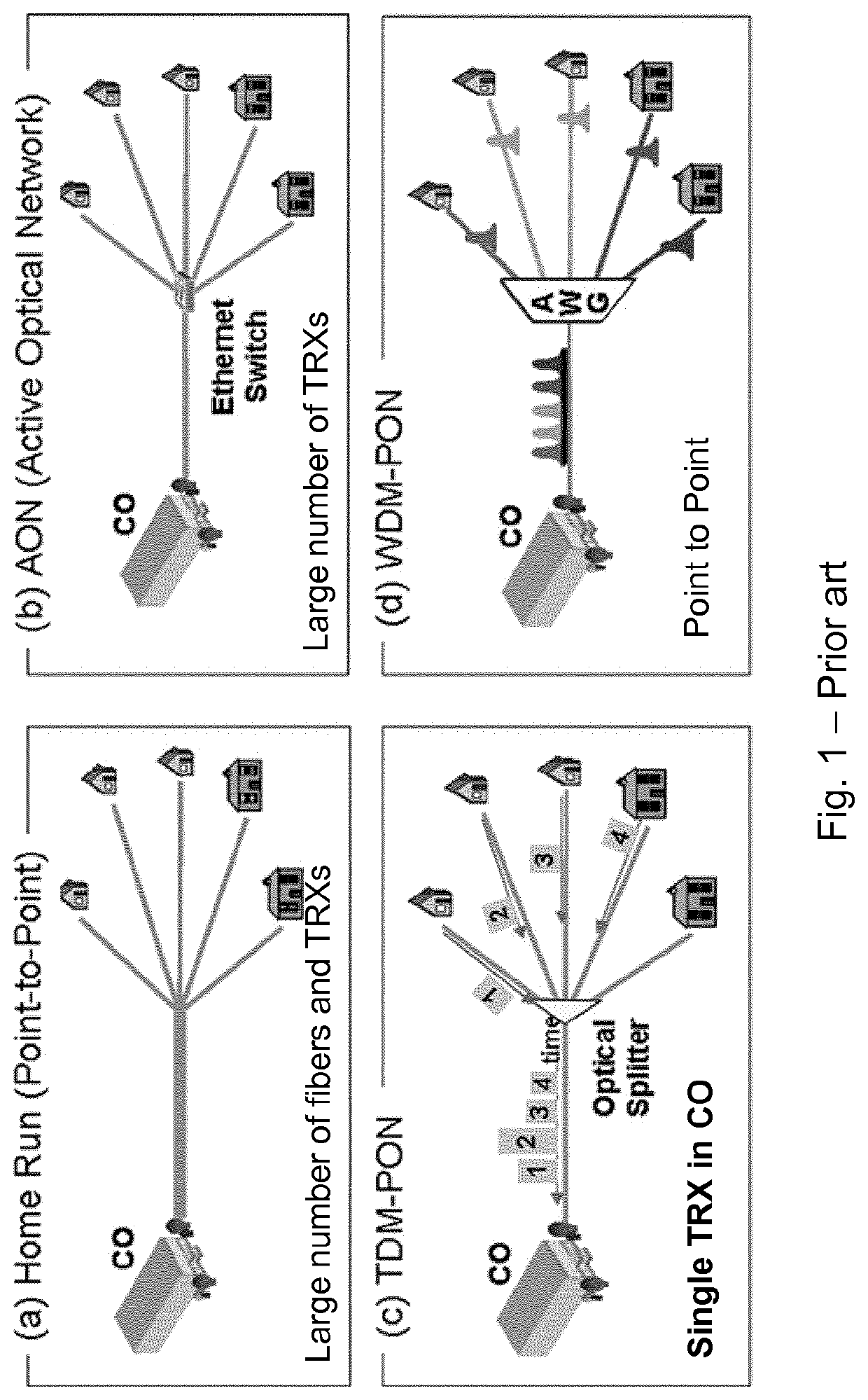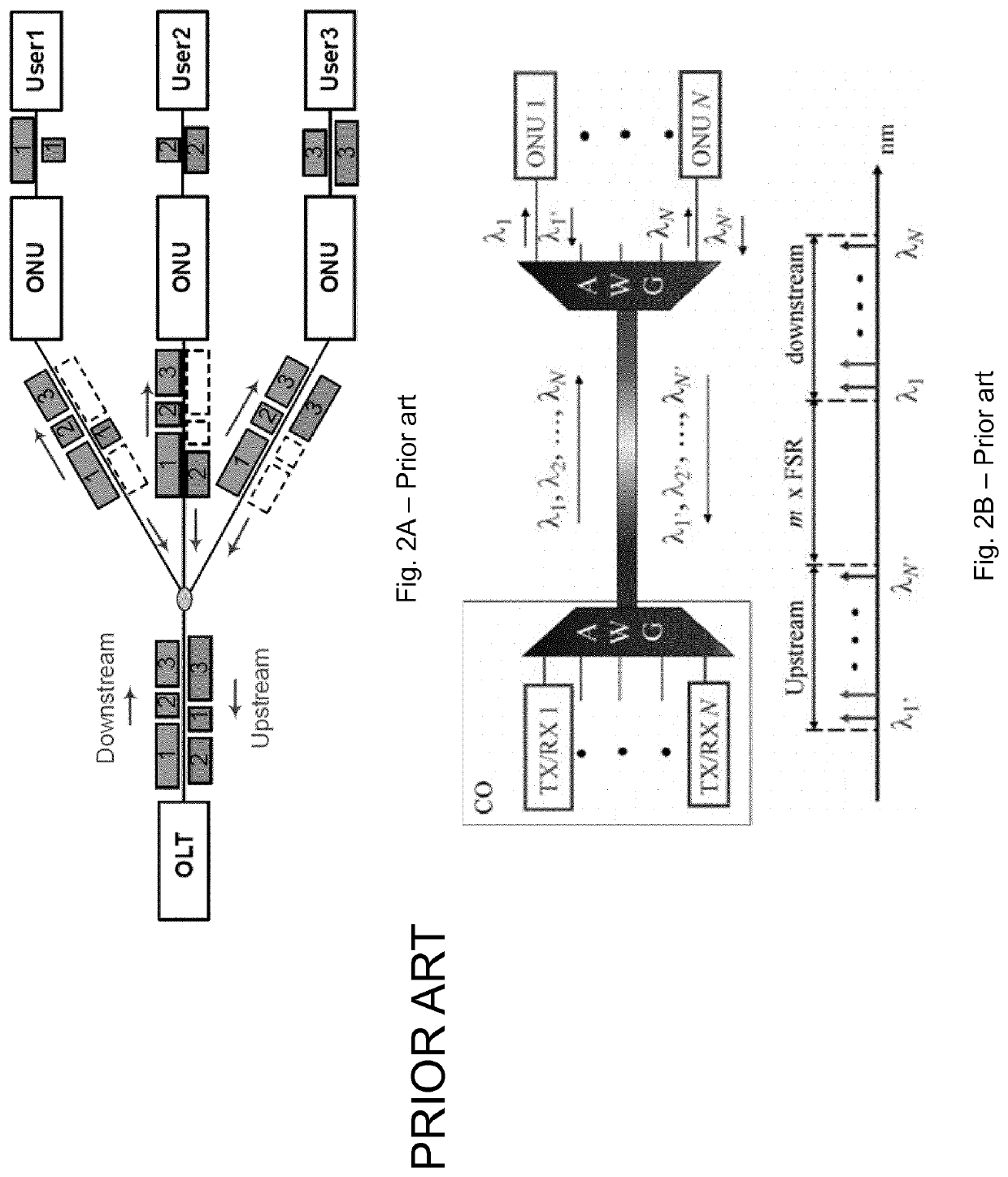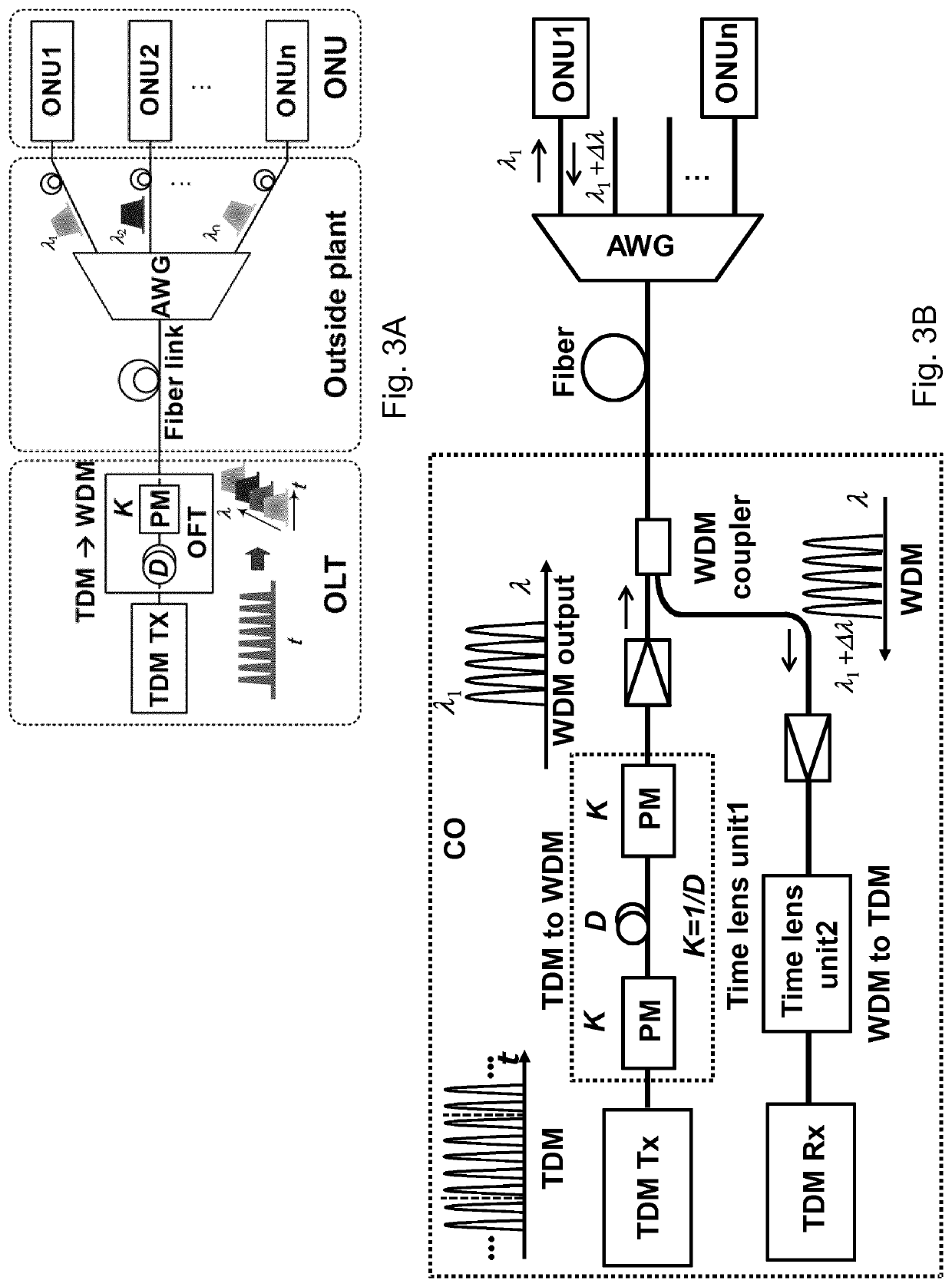Optical Line Terminal And Optical Fiber Access System With Increased Capacity
a technology of optical fiber access system and optical line terminal, which is applied in the direction of multiplex communication, electrical apparatus, and wavelength-division multiplex systems, can solve the problems of reducing the capacity of current pon technology, so as to increase the transmission capacity of optical access system and achieve the effect of increasing the capacity of pon system and enhancing the transmission capacity
- Summary
- Abstract
- Description
- Claims
- Application Information
AI Technical Summary
Benefits of technology
Problems solved by technology
Method used
Image
Examples
example 1
[0098]The presently disclosed time-lens PON approach has been demonstrated experimentally. A 40-Gbit / s PON downstream transmission over 150-km 40-split unamplified SMF-plant has been obtained with a single-carrier OOK transmitter and low-cost 10-GHz APD-based receiver, achieving a power budget of 51.5 dB (35.5 dB / ch.) for a BER=3×10−6. Meanwhile, the same system achieves 128 Gb / s PON over 100 km 64 split unamplified Fiber-Plant using optical TDM technique, showing flexibility and scalability of the presently disclosed scheme in terms of wavelength control and system capacity.
[0099]Principle and Experimental Setup
[0100]One example of the presently disclosed OLT structure / PON architecture is shown in FIG. 3A and this setup is used here in example 1. In the optical line terminal (OLT), a single carrier TDM transmitter generates a high-speed TDM signal, which is then converted to a number of low-speed WDM channels using a time-lens based OFT signal processor, which comprises a dispersiv...
example 2
[0107]In this example the scalability of the presently disclosed solution is investigated and 128×2 Gb / s WDM PON downstream transmission over a 100-km unamplified SMF-plant is demonstrated using a 200 m highly nonlinear fiber (HNLF, for example from OFS). Although all 128 generated WDM channels achieve BERs below the 10−3 forward error-correction (FEC) limit after transmission, a bandwidth limitation of the HNLF is observed, which will limit the scalability of the proposed scheme. To overcome this issue the use of AlGaAs-on-insulator (AlGaAsOI) nonlinear waveguides [6,7] for implementing the time lens is investigated. The same 128×2 Gb / s WDM PON system using an AlGaAs device is demonstrated, which achieves similar performance as HNLF, but without showing indications of having reached a bandwidth limitation.
[0108]Principle and Experimental Setup
[0109]The principle is the same as shown in FIG. 3a. In the OLT, a single TDM transmitter generates a high-speed TDM signal, which is then co...
PUM
 Login to View More
Login to View More Abstract
Description
Claims
Application Information
 Login to View More
Login to View More - R&D
- Intellectual Property
- Life Sciences
- Materials
- Tech Scout
- Unparalleled Data Quality
- Higher Quality Content
- 60% Fewer Hallucinations
Browse by: Latest US Patents, China's latest patents, Technical Efficacy Thesaurus, Application Domain, Technology Topic, Popular Technical Reports.
© 2025 PatSnap. All rights reserved.Legal|Privacy policy|Modern Slavery Act Transparency Statement|Sitemap|About US| Contact US: help@patsnap.com



